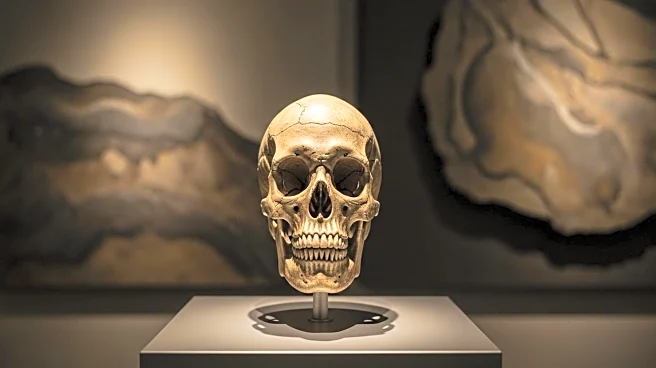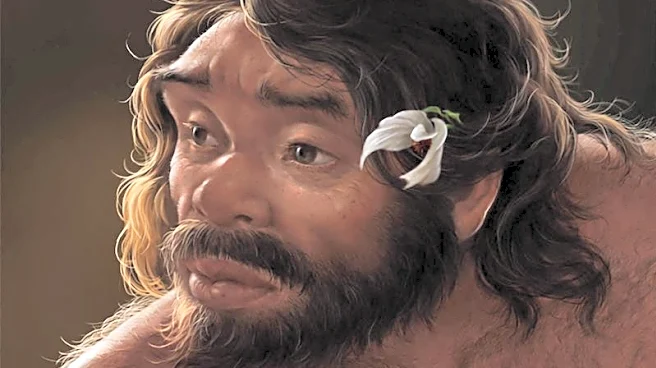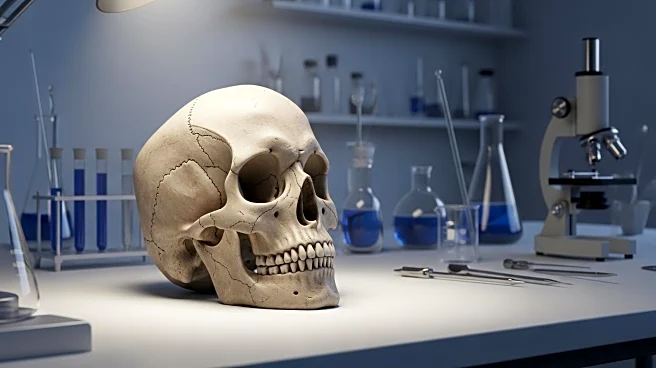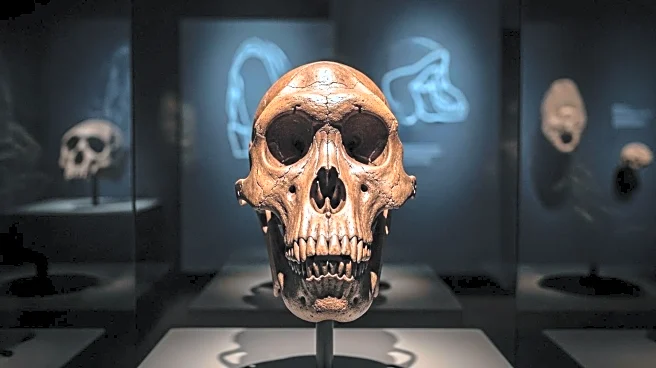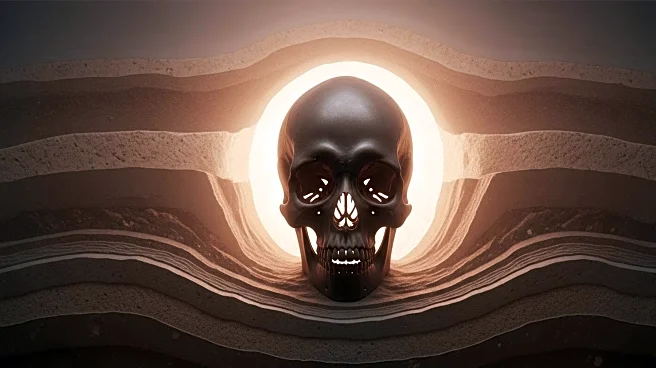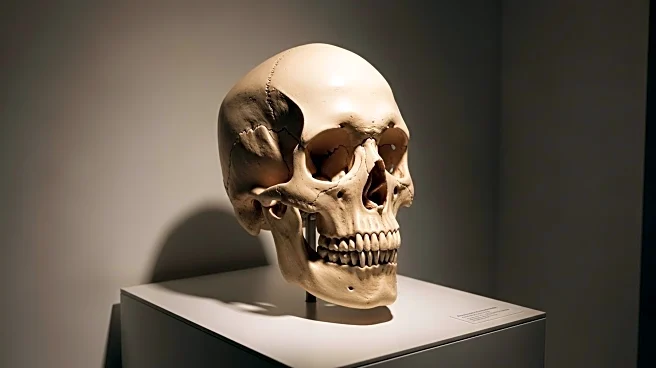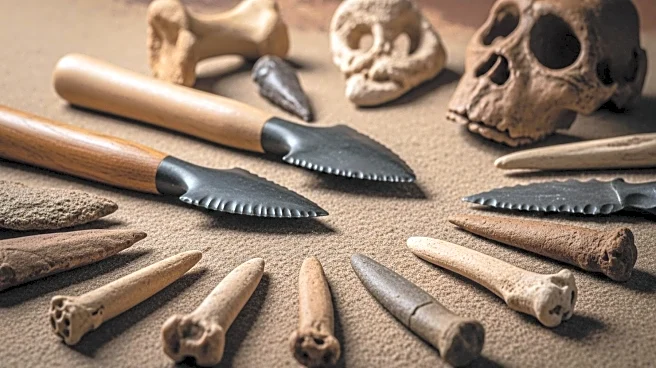What's Happening?
A team of scientists has digitally reconstructed a crushed skull found in China, believed to be 1 million years old, which challenges existing theories about human evolution. The skull, initially thought to belong to Homo erectus, has features suggesting it is an early ancestor of the Denisovans, a prehistoric human group. This discovery implies that the Denisovans originated much earlier than previously thought, potentially altering the timeline for Homo sapiens and Homo neanderthalensis. The study, published in the journal Science, suggests that by one million years ago, human ancestors had already split into distinct groups, indicating a more complex evolutionary history.
Why It's Important?
The findings could significantly impact our understanding of human evolution, suggesting that Homo sapiens may have emerged 400,000 years earlier than previously believed. This challenges the traditional view that Homo sapiens, Neanderthals, and Denisovans diverged from a common ancestor around 700,000 to 500,000 years ago. The research could reshape theories about human origins and the interactions between different human species. If accepted, this could lead to a reevaluation of the evolutionary relationships and timelines of early human species, affecting studies in anthropology and genetics.
What's Next?
Further analysis of the third skull found in the same region could provide additional insights into the evolutionary history of early humans. Researchers plan to extend their studies to include more fossils from Africa and other regions to refine the evolutionary timeline. The findings may attract skepticism, prompting further research and debate within the scientific community. The study raises questions about the geographical origins of Homo sapiens and their ancestral populations, potentially challenging the view of Africa as the sole cradle of humankind.
Beyond the Headlines
The study highlights the importance of East Asia in understanding human evolution, suggesting that the region holds crucial clues to the later stages of human development. The research underscores the complexity of human ancestry and the need for more comprehensive studies to unravel the 'muddle in the middle' of human evolution. The findings could lead to new hypotheses about the interactions and interbreeding between different human species over time.

